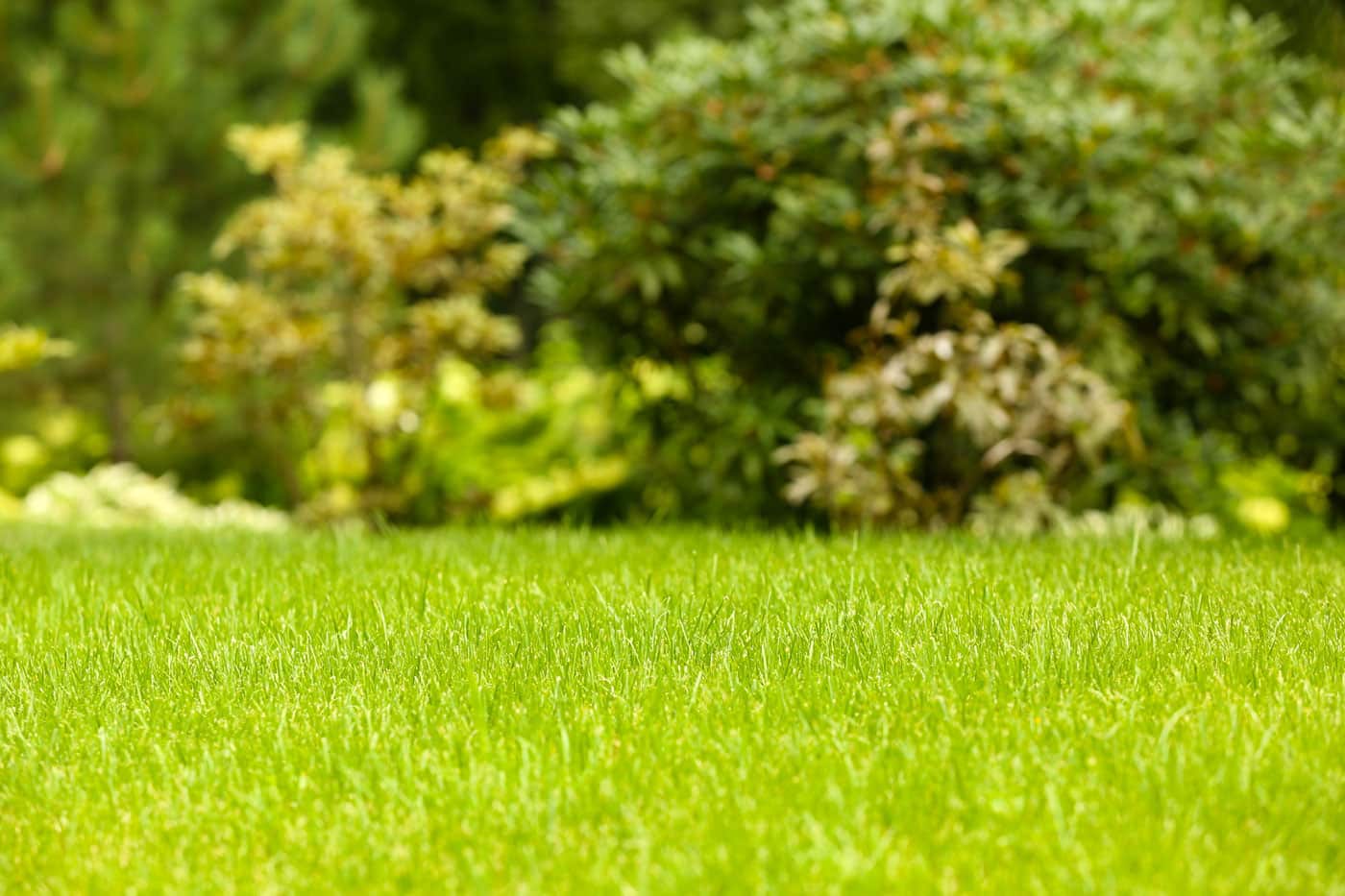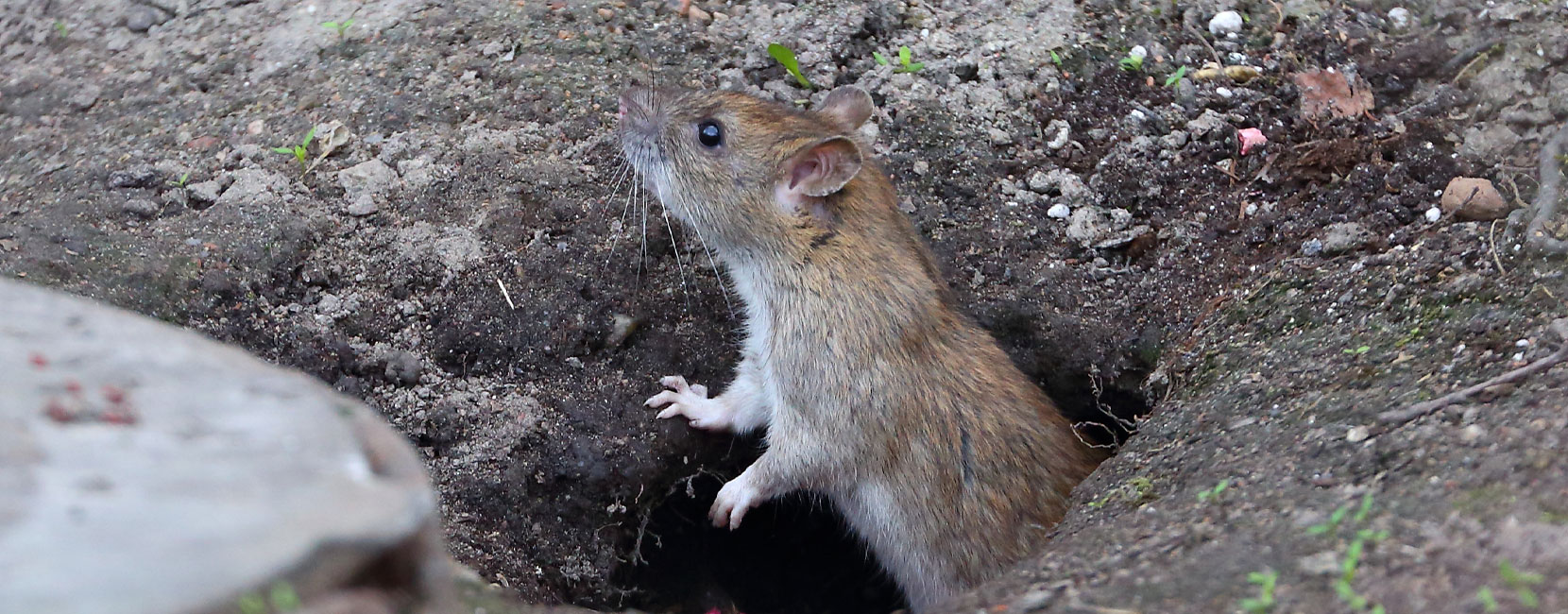Most homeowners enjoy a thick, green lawn, and as the weather gets warmer, keeping that lawn green and clean will get more challenging. Too much water can leave a lawn susceptible to disease, while too little water makes it dry and brown. Soil-borne insects such as grubs can eat the roots, and weeds can make the lawn look unkempt. Many homeowners feel the only way to solve these issues are with loads of chemicals.
Are insecticides and herbicides necessary to have beautiful, lush grass? No. Yet grass—whether in a residential neighborhood or in the expanse of a golf course—has been criticized as “high maintenance.” Many homeowners irrigate their lawns almost daily and often exceed recommended rates of fertilizer and pesticides. Most homeowners want to replicate the golf course look to their landscape without really understanding how their landscape should be managed differently. Since golf courses need to meet the PGA’s strict requirements for turf quality, they typically receive higher doses of fertilizer and pesticides and are irrigated frequently during the summer months.
However, several golf course superintendents are discovering that integrated pest management, or IPM, not only reduces the amount of water and chemicals that need to be added to the turf, but it can also result in healthier turf. San Francisco’s Harding Park and North Carolina State University’s Lonnie Poole golf courses are two environmentally-friendly golf courses that have met the strict requirements of the PGA without the high inputs of chemicals.
When properly maintained, turf benefits water quality because it acts as a filter for silt, excess nutrients, and other contaminants. Superintendents at the Harding Park and the Lonnie Poole, as well as homeowners who maintain their lawns through use of IPM, recommend the following practices for a safe and healthy, low-maintenance lawn:
Test your soil
Soil tests, available for little or no cost in most states, can predict possible problems a homeowner may face. Most soil tests indicate the balance of nutrients available in the soil, and recommend ways to correct soil that is improperly balanced. Balancing the soil before planting will reduce the amount of fertilizer required to keep the grass healthy later.
Scout Frequently
Many landscape specialists tell homeowners to “walk the property” several times a week. Check for brown spots or holes, indicating possible soil pests, and keep an eye on those spots. Standing water or soggy areas can invite disease and insect problems. Pull or mow weeds before they become numerous. Treating problems while they are small saves time and money.
Timing is Everything
How many of us have seen sprinklers at an office park watering the grass during a rain shower? Overwatering weakens the roots, making grass more vulnerable to abiotic stresses (drought, heat, etc.) as well as biotic ones (diseases, insects, etc.). Water only during dry periods, watering “deeper” only once a week. “Some golf courses have water sensors to tell you when to water,” says Dr. Danesha Seth Carley, turfgrass physiologist at NC State University. “This technology is coming to homeowners as well!” The Clemson University Extension website has tips on how to tell when to water the lawn and how long to run the sprinklers. Most Cooperative Extension agencies will have resources regarding water usage and ways to use water wisely in your home lawn.
Conserve the Fertilizer
Fertilizing a warm-season lawn in October wastes fertilizer and money, since grass is preparing to go into its dormant season. Instead of applying a generous amount of fertilizer on the lawn twice a year, fertilize based on the results of a soil test and depending on the type of grass. Check your state Extension website for recommendations on fertilizing in your state. Also, be very careful to keep the fertilizer on your lawn and not on impervious surfaces – sidewalks and driveways – where it may run-off into storm drains becoming a potential pollutant.
Practice Good Mowing Techniques
Cut only the top one-third of the grass, and during dry periods, mow less often. Unless you live in a wet area, leave the grass clippings on the ground to provide mulch for the soil. During dry periods, frequent mowing can stress the grass and leave it vulnerable to pests and die-back.
Sharpen Mower Blade
When the cutting edge is dull, it actually tears the grass instead of slicing it. Torn grass blades make the plants more vulnerable to disease, sun damage, and insects. Generally, your mower blade should be sharpened at least twice a year. It may need more frequent sharpening depending on the size of your lawn, grass type, and how often you mow. Rotary mower blades should be sharpened and also balanced, to prevent damage to the mower. Reel mower blades are best sharpened by a professional mower repair service.
Lawn Care Resources
TurfFiles (North Carolina State University.)
This site contains information on native grasses, lawn care issues and more for North Carolina and surrounding states.
Solutions for Your Life: Groundcovers and Lawngrasses (University of Florida.)
This site offers information on variety selection and lawn establishment and maintenance in Florida’s unique environment.
Sharpening The Mower Blade (University of Florida.)
This site offers a Gardening in a Minute series with loads of information on how to maintain equipment and care for your landscape.
AggieTurf (Texas A&M University.)
This site contains grass and weed identification sections, an automated fertilizer rate calculator, control recommendations for insects, diseases and weeds, and volumes of other information about the care and maintenance of turf.














